Logitech z623 THX Speaker System Review
Build 3.0 | Sound 3.2 | DSP Sound 3.8 | score breakdown

Oh how the mighty have fallen. When THX was first introduced as a standard all of the top brands rushed to get certified by Lucasflim.
One of my Kinergetics Class A amps is THX certified, the amp needed to be biased for higher output to meet the spec back in 1996.
The THX standard ended up getting spun off as a separate entity, and the blasphemers at sound card maker Creative Labs are the current owners.
The standard has been watered down to a loudness spec, ability to play 85dB with 20dB peaks, so just about any ole garbage can be THX certified.
Design Overview:
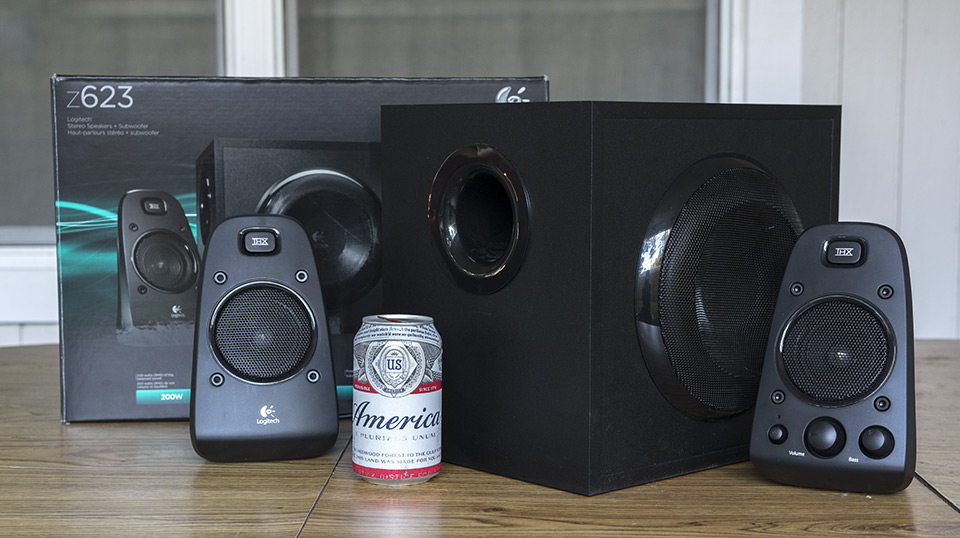
The Logitech z623 speakers follow the standard 2.1 satellite and subwoofer format. While it may be the standard I'm not a fan of subwoofers and this is only the second product I've reviewed that has one.
Component Overview:
Driver
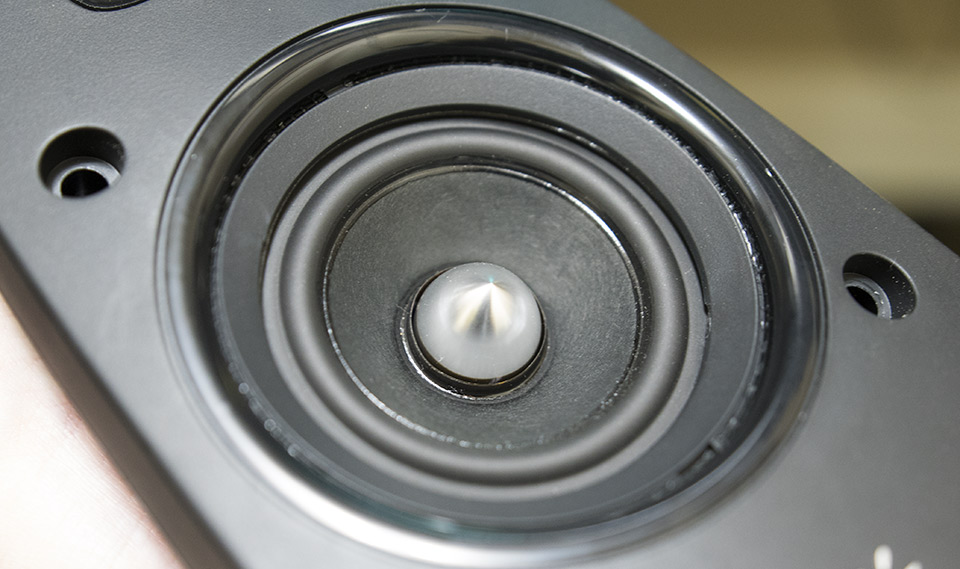
Satellites use a 2.5" full range driver, and once the grill is removed the driver actually looks pretty nice. The surround is a soft butyl rubber, and instead of a dust camp or whizzer there is a nice shiny phase plug in the center of the driver.
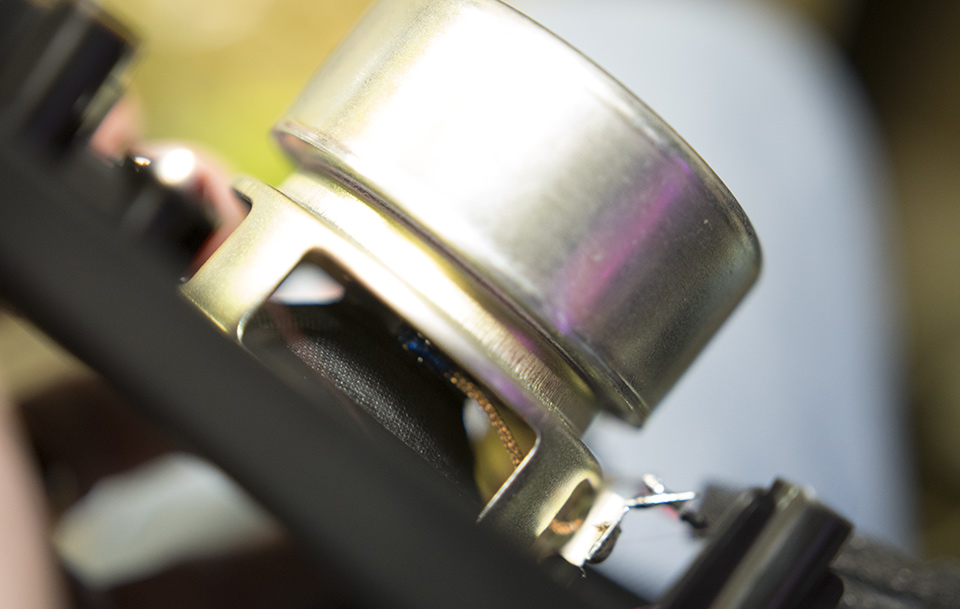
Back of the driver shows the z623's are magnetically shielded and seem pretty well made.
Grills
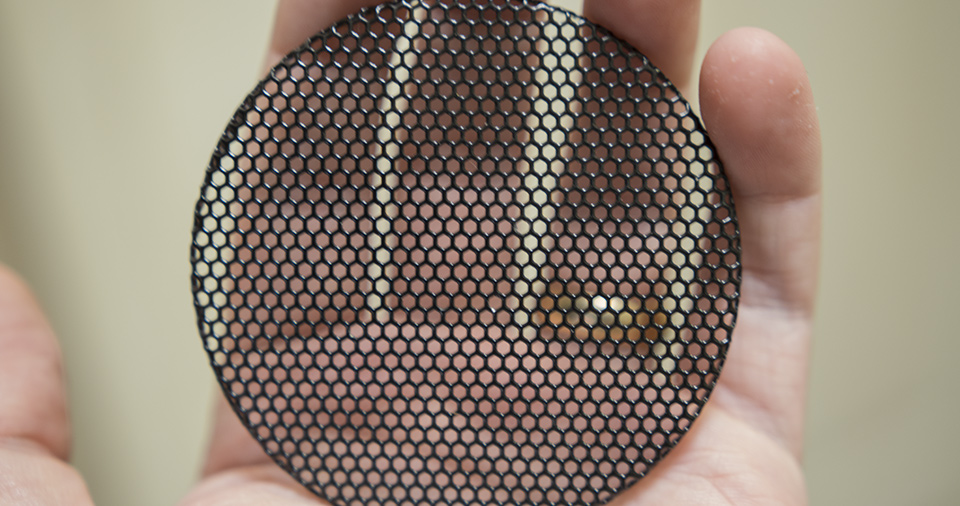
Removing the grills took a bit of paper clip folding, but came off cleanly once I applied the right amount of force. Grills are a metal mesh and seem open enough to not interfere too much.
Subwoofer
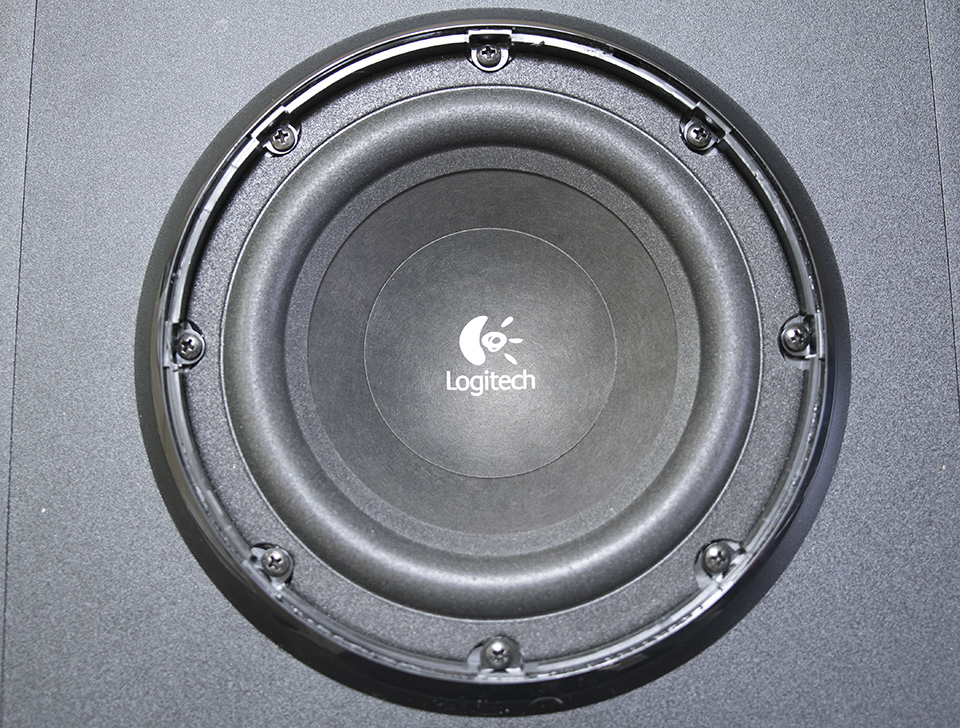
The subwoofer driver is supposed to be an 8 inch, but once you remove the massive grill the driver shrinks down to a little over 7 inches across.
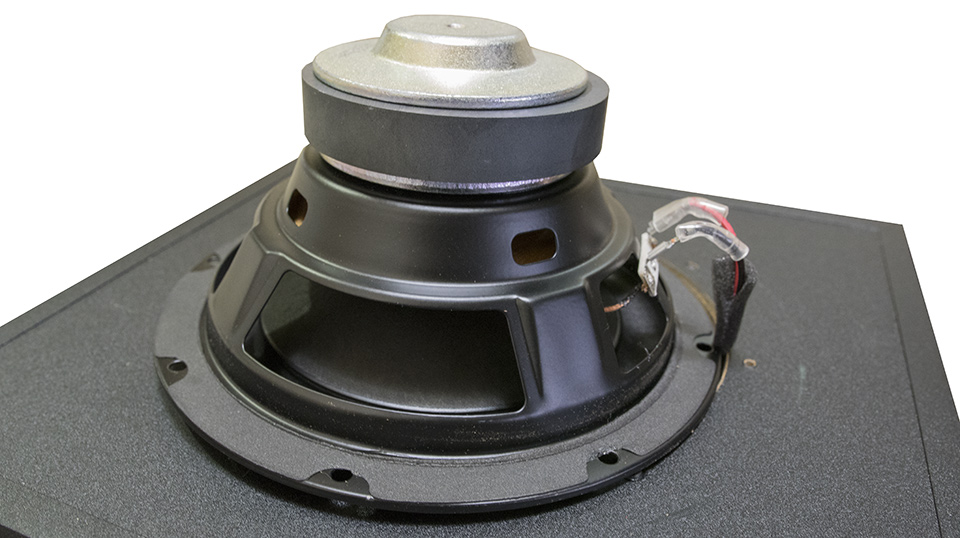
Stamped steel basket, big magnet, paper cone, and foam surround - looks like a pretty good driver considering the price of the system.
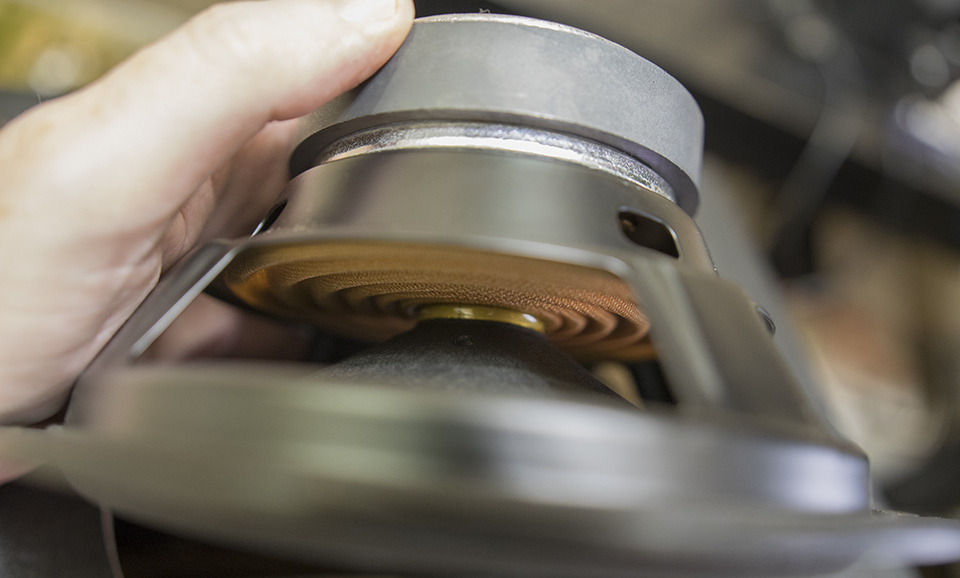
No vented pole piece on this driver, instead there are tiny holes in the cone behind the dust cap to vent the pressure. Spider looks generic but functional.
Cabinet/Amp/Port
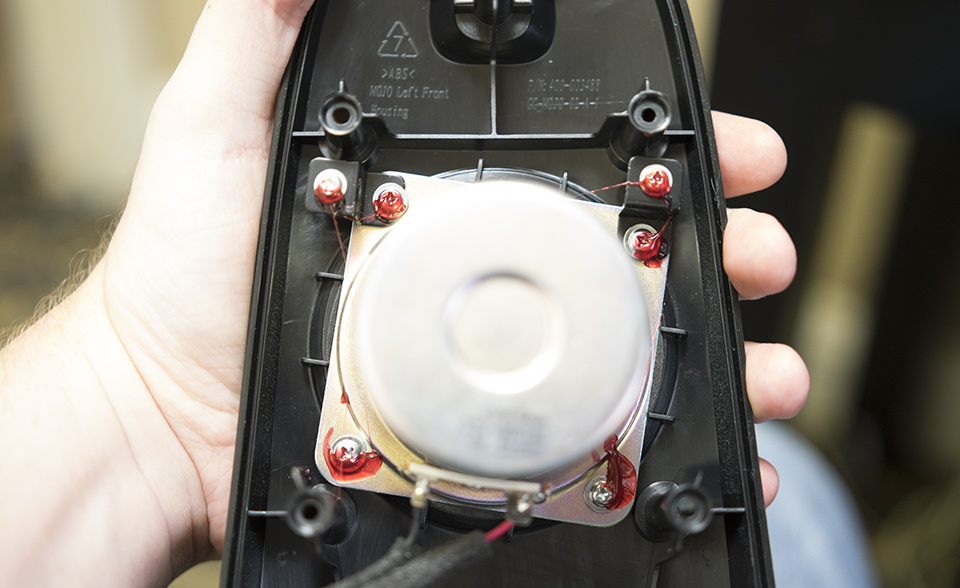
The satellites are two piece ABS plastic and have 6 screws holding the two halves together. Honestly this is probably good enough because the driver is so small, and crossover point so high.
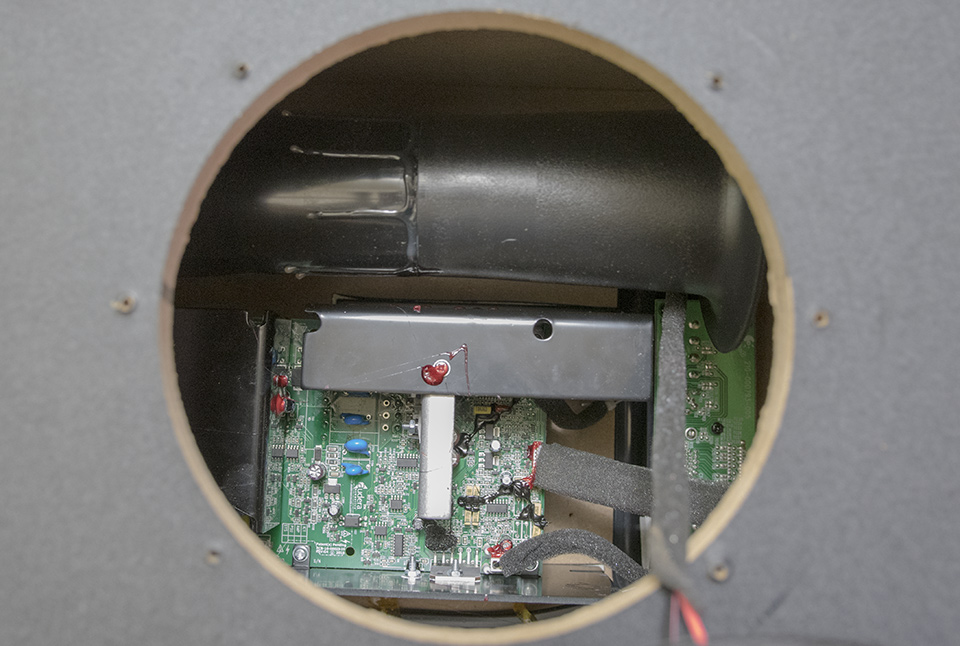 The subwoofer cabinet is 9x12x11 inches and cheap mdf, but heavier than I expected.
The subwoofer cabinet is 9x12x11 inches and cheap mdf, but heavier than I expected.
In comparison to the size of the box, the port on this subwoofer is massive. 2.5 inch diameter and 10 inches in length with port flares on both sides, it takes up a large amount of the box volume.
Power supply and amp boards are both built into the subwoofer. Lots of chips in there doing a bunch of stuff. I'm guessing there is some logic for switching inputs, some equalization, a crossover for the sub, and 3 channels of class D amplification.
Inputs
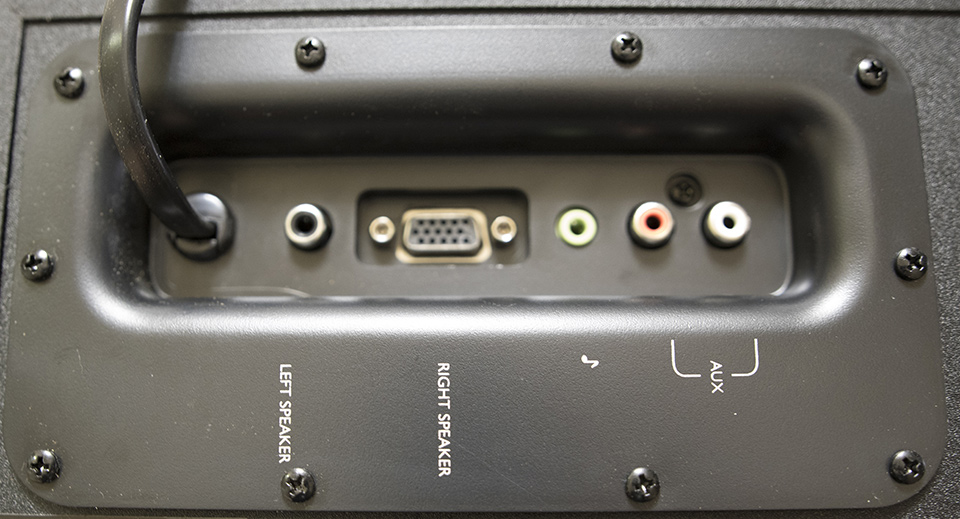
The z623 speakers have two inputs, RCA and 1/8 inch headphone jack. There is no way to switch inputs and I didn't bother trying to play two sources at the same time, so I have no idea how switching is handled.
Controls
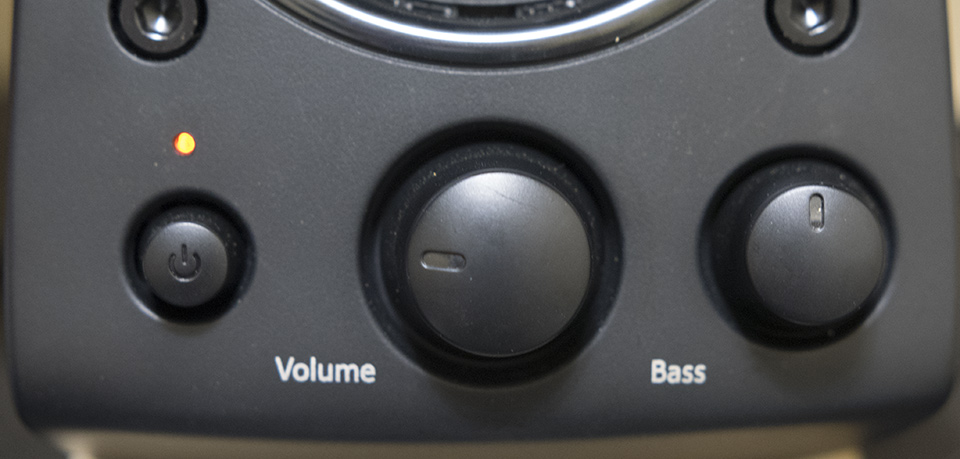
Right speaker has volume and bass knobs. Volume pot seems clean and I did not notice any imbalance or static while testing. Bass knob has a centering indent so you can find the default position easily. Also, there is a headphone output and an aux input on the side of this satellite.
Desktop Setup:
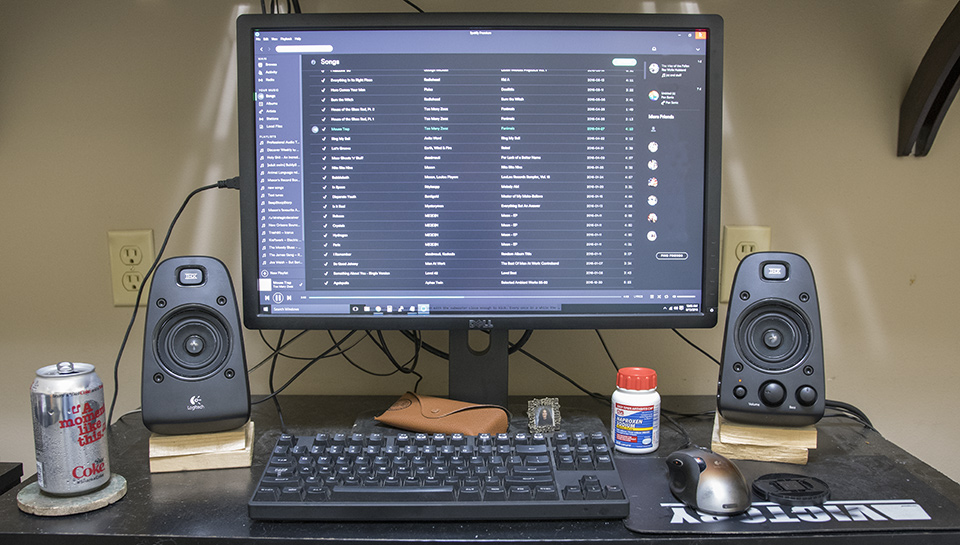
Satellites are very sensitive to placement. A slight toe-in and elevation with some blocks of wood make for pretty good imaging, although the sound is a bit too directional for my taste.
Listening Notes:
Bass is really heavy, turning down the knob removes a bit too much of the 300-100Hz range without cutting the 60Hz mess that is actually the problem. Just going to have to deal with the bass as is to keep the midrange balance.
Sounds like three separate speakers with the sub being crossed too high and having an obnoxiously audible cabinet resonance.
Midrange does not sound bad, maybe just a slight rising response.
The z623's are pretty awful, better than the Logitech z313 in stock form, but it's pretty bad.
Turns music into movie special effects.
Treble is spiky and headache inducing in the dog whistle range.
I've now got a massive headache from the treble. Fuck this shit, I'm done.
Measurements:
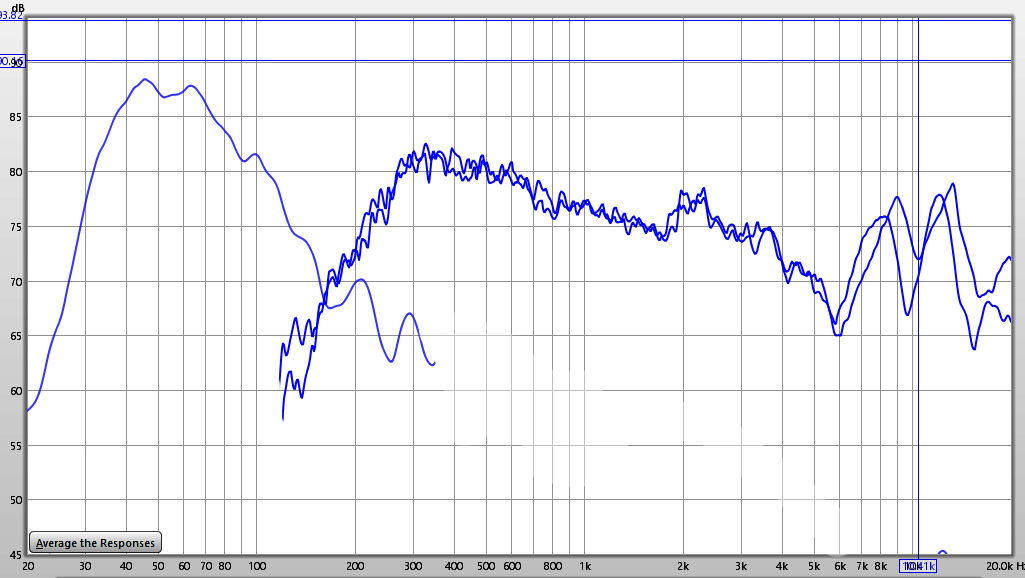
These little sat sub combos are a pain to measure accurately. I've got to fight room modes in the crossover region, as well as phase cancelation and other not good things. This is a close mic of the satellites.
Keep in mind with close mic the treble response is going to taper off and there is an artificial hump around the resonant frequency of the driver.
Regardless of the anomalies in the measurement it's clear above 6k the little full range drivers are having a panic attack from being played too high.
For the bass response I'm using a technique I just came up with, "kind of close ground plane measurement."
Basically to avoid floor bounce the mic goes on the floor like a traditional ground plan measurement, and to keep room modes to a minimum the mic is kept equidistant between the port and woofer 1 foot away from the corner of the sub.
DSP Correction:
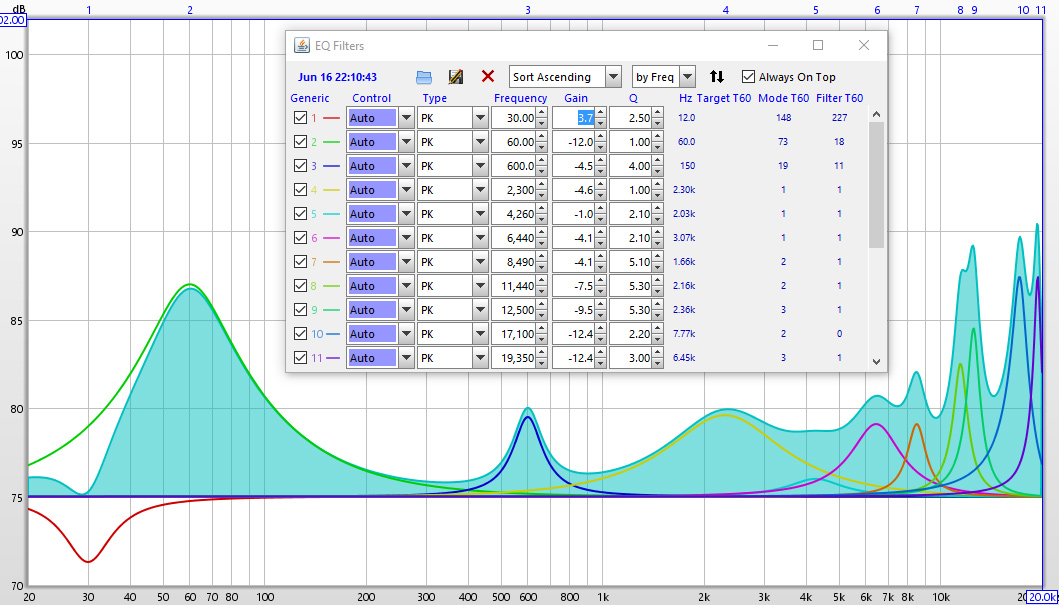
Working from left to right. I cut a massive chunk of the bass, and then used that headroom to extend the bass to about 32Hz. There was a resonance of some kind coming from the subwoofer in the 600Hz range. I had to cut it, and it sounds better now. Leveled off the rising response in the midrange, and chopped the nasty cone breakup distortion above 10k.
Corrected Listening Notes:
Audiophile music sounds great on this, of course well recorded music sounds good on almost anything.
Playing M|O|O|N's Hydrogen track measures 105dB at 50Hz before the amp runs out of juice and starts distorting. This is enough to get you evicted from most apartments, more importantly, it meets the THX standard.
Trying for more, the deep bass in M|O|O|N's Release has headroom falling to about 95db at 35Hz before the subwoofer runs out of excursion.
Bass coverage is pretty even with the subwoofer close enough to kick. Too much of the subs performance feels like port noise instead of driver, but for the most part it's doing the job.
Bass guitar is audible as an instrument instead of blending in with drums.
The full range driver once corrected is actually pretty low distortion, and the amp sounds clean on this setup unless you push it too hard.
Still sounds like three speakers instead of a musical performance.
Final Thoughts:

I came in with extremely low expectations, and while the treble in stock form is unlistenable to me. The result I got out of the subwoofer with DSP is enough to give the Logitech z623 a close look in the $100 range.
The Logitech z623's are noise makers, and nothing is going to change that. There is not a lot of musicality to the speakers. To get musicality you are going to need to put up with less bass, and probably pay more money.
Review Scores:
| Build Quality | |
| Tweeter | - |
| Woofer | 3 |
| Cabinet | 2 |
| Features | 5 |
| Crossover | 3 |
| Amp | 3 |
| Subwoofer | 2 |
| Score | 3.0 |
| Sound Quality | |
| Neutrality | 3 |
| Bass | 1 |
| Extension | 7 |
| Treble | 0 |
| Midrange | 3 |
| Headroom | 7 |
| Dispersion | 4 |
| Detail | 1 |
| Imaging | 3 |
| Score | 3.2 |
| DSP Sound Quality | |
| Neutrality | 6 |
| Bass | 3 |
| Extension | 7 |
| Treble | 1 |
| Midrange | 3 |
| Headroom | 5 |
| Dispersion | 4 |
| Detail | 2 |
| Imaging | 3 |
| Score | 3.8 |
Click here to download the DSP correction for this speaker system.
Click here to buy the Logitech z623.
Check out the system finder to see what I recommend.
Other content you may like:
- Vanatoo Transparent One Review - Software update brings new standard of performance!
- Lone Star Audio Fest 2018 - Staying up late, drinking too much, smoking like chimneys!
- Andrew Jones goes back the be begining, ELAC B5.2 Debut 2.0 Review is up!
- New Scores for all reviewed speakers - Compare and sort for fun!
- Creative Sound Solutions DIY Solution for the high end - CSS Criton 1TD v2 review is up!
- Dayton Makes a Budget Desktop speaker with a crossover - Dayton Audio MK402 review is up!
- Smaller than small, deeper than deep - iLoud Micro Monitor review is up!
- Vanatoo's new speaker, The Transparent Zero review is up!
- SVS Prime Bookshelf Review is now available for your viewing pleasure
- ELAC A-Stock UB5 Listening Impressions are up!
- 30 years in the making, the ancient Bose 901 finally gets measured - The Bose 901 review is up!
- Lock and load, we are hitting the bottom of the barrel with both barrels - The Logitech z313 review is up!
- Bulletproof speakers... No, it's just the B&W 686 S2 Review!
- Declare independence from the British sound! - The KEF Q300 review is up!
- Recommended System Finder - Just in time for the Holidays!
- JBL LSR308 Studio Montor - Super Massive Epic Review!
- Two years after starting this site I finally get around to talking about my stereo.
- Small and cheap speakers transform into retarded and good... Micca COVO-S Review!
- AMT tweeter on a B652? The Dayton B652-AIR is reviewed for great justice!
- JBL LSR305 Studio Monitor Review!
- Zu Essence Review!

